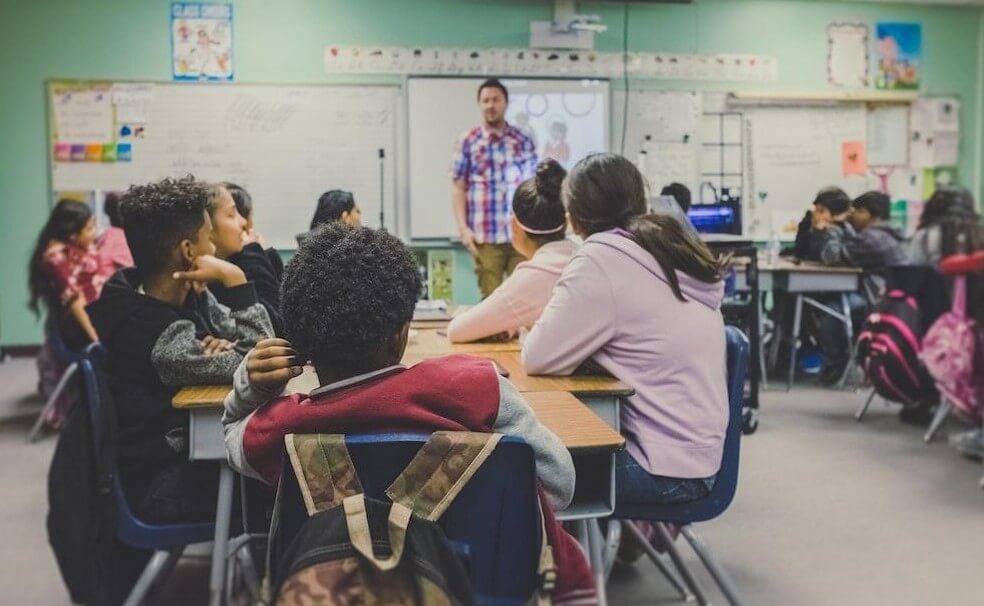It is impossible to escape the connections between culture and learning, which seem to be a key area of focus for educators and a hot topic in education right now. While there have been some controversial and volatile stories around education and culture, the fact of the matter is that in order to best serve their students, teachers must consider how culture affects learning.
Cultural sensitivity is critical to developing a positive school environment, and educational institutions are increasingly investing in culturally responsive teaching.
Cultivating an inclusive classroom culture and one that embraces, celebrates, and even adapts to cultural differences and diversity pays off for teachers with students who are more engaged because they see themselves and their culture represented in the curriculum. Students will be better able to work collaboratively with peers and for life beyond the classroom, in a world where they may undoubtedly have co-workers, neighbors, and friends whose cultural experiences are nothing like their own.
Balancing the Standards with Culturally Relevant Content
It’s an age-old challenge for teachers: the need to stay on track in order to teach all of the standards within the curriculum while also remaining flexible to deviations that could help students’ learning experiences.

How we learn varies widely (not just for young students but also throughout our adult lives), so educators, whether elementary school teachers or corporate training professionals, must find creative ways to make learning as culturally relevant as possible. Recognizing that diversity and cultural differences result in different learning styles is now universally accepted in education.
Few things shape our learning styles as profoundly as cultural influence.
Culture and Learning: An Indelible Impact
Teachers are tasked with what seems like the impossible: to instruct a diverse group of students with the ultimate goal that they will comprehend information on a particular subject while embracing and representing different cultural perspectives.
“Culture” can often be a blanket term to cover many aspects of a person, including (but not limited to):
- Values associated with a particular cultural or ethnic group
- Faith-based practices
- Family dynamics, background, and relationships
- Language differences or barriers
- Socioeconomic levels and access to educational materials
- Cultural standards for early education
A child at home with a parent until the first day of kindergarten will have a different cultural background and therefore a different learning style than one enrolled in a preschool from age one. A child who speaks English as a second language will have learning needs that differ from her peers. A family who follows a strict prayer schedule will have children who need the time and space to pray at school.
Everything kids experience outside of the classroom, whether that means cultural traditions in their families, stresses in their home life, or simply whether or not their family values school, affects their learning.
Examples of Cultural Impacts on the Classroom
Cultural impacts are felt daily in classrooms, with students’ achievements, behavior, and relationships (both with teachers and peers) affected by how their culture has shaped them.

A few examples of this include:
Behavioral Patterns
Some students may be raised in a strict household, where children are expected to stay quiet around adults, adhere to rigid rules, and sometimes keep to themselves and rarely engage in “play” activities. Imagine that child thrust into a classroom with a lively, animated teacher who uses silliness as one of her number one tools to keep learners engaged.
A classroom environment so harshly different from one’s home life can be challenging for a student to settle into comfortably. It may take extra prodding from the teacher to get that student to feel comfortable participating, especially in noisy or silly games.
On the flip side, a student with very few rules at home who is rarely subject to any restrictions (whether that means the TV shows they watch, what time they go to bed, or how late they roam the neighborhood) will struggle to stay engaged in a rigid classroom environment.
Our home lives shape how we respond and react to teachers (as well as how we respond later in life to our supervisors and co-workers). The balance of respecting values and cultures at home while helping students adapt their behavior in the classroom is an essential lesson for many students and a significant challenge for teachers.
Family Traditions
One student may come from a family who visits the public library every Sunday and the museum once a month and only allows educational TV programming. Another student might spend all his free time playing sports. Finally, another might be expected to take care of their siblings every day after school. This kind of diversity is not uncommon in most learning environments today.
In classrooms with international students, teachers have other family traditions to consider. For example, rules for making eye contact and touching vary significantly between cultures. In many Latin countries, it is common for people to hug when greeting each other or touch each other when talking. On the contrary, in some Asian cultures, people generally do not shake hands with members of the opposite sex.
Students that come from these varying backgrounds will undoubtedly have different learning styles. What matters to their families and how they prioritize their time will shape how they respond in school.

Similarly, a student whose family has a solid connection to faith-based practices may have trouble adapting to lessons on particular subjects if the lesson seems to conflict with what they have learned in their faith. Cross-cultural communication is needed to find a balance in addressing the needs of a diverse group of learners.
Balancing Technology with Culture
Another component of culture that affects how students learn is technology use outside the classroom. Some students enter their early elementary years already quite “tech savvy” from time spent on screens as early as the toddler years. In contrast, others who have not been exposed to technology (with reasons ranging from faith-based practices to socioeconomic disparities) may struggle to keep up with their peers.
Educators must then find ways to “pace” the use of technology to encourage less advanced students to keep up while giving tech savvy students other opportunities for learning. For this reason, it remains critical to integrate different cultural perspectives while alternating between lectures, videos, group classwork, and other methods of instruction. What one student grasps quickly in terms of cultural context might feel completely foreign to another student from a different background.
Our cultural diversity and traditions will affect how we learn in a classroom throughout our lives, and educators must always strive to use diverse methods to embrace, engage, and inspire all cultural identities.



